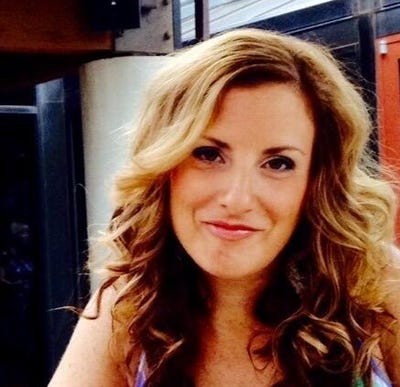Why Clean Is Going GreenWhy Clean Is Going Green
Sales of free-from household detergents, sprays and soaps are soaring. Improved distribution, marketing and brands meet consumer mindfulness, sending sales of green cleaning products soaring.
November 29, 2019

In this era of conscious consumerism, people are increasingly mindful of how the products they buy impact not only their personal health but also the health of the planet. Whether washing clothes, cleaning the kitchen or scrubbing the tub, consumers want to know that the products they bring into their homes are safe.
Consumers are increasingly seeking clean labels to reduce the chemical load on their bodies and are “making the connection that the same reasons they choose to eat organic food apply to the nonfood products they use,” according to the Organic Trade Association (OTA), Washington, D.C.
Sales of organic nonfoods reached $4.6 billion in 2018, representing a growth rate of 10.6%, the OTA’s 2019 Organic Industry Survey found. While this positive growth represents all nonfoods, the gains in free-from household cleaners are even stronger.
“In the U.S., green surface cleaners are outperforming the market,” says Jamie Rosenberg, a senior global analyst for London-based Mintel. Speaking at the recent Cleaning Products U.S. 2019 conference in Bethesda, Md., Rosenberg reported that green brands acquired by global conglomerates performed the best last year, and improved retail distribution and marketing spend are contributing factors to that sales growth.
According to Mintel, green surface cleaning brands grew 28.3% in 2018, compared to the modest 2.6% growth of the total surface cleaning market. The market research firm reports that surface cleaners represent a $4.5 billion market.
Cleanup on Aisle 12
Grocers such as Wegmans Food Markets of Rochester, N.Y., and Boise, Idaho-based Albertsons Cos., which have committed to offering cleaning products that are safer for their shoppers and the planet, were recently recognized by the U.S. Environmental Protection Agency (EPA) as Safer Choice Partners of the Year in the retail category.
To qualify for the Safer Choice label, a product must meet the EPA’s Safer Choice Standard, which includes stringent human and environmental health criteria. When this label appears on a product, it means the EPA has evaluated each ingredient for potential human health and environmental effects.
Wegmans says it “is transitioning all Wegmans brand household cleaning products, laundry detergents and dish detergents—where science allows—to EPA Safer Choice-certified formulas. The entire line of these products, approximately 46 in total, is being reformulated with the goal of offering a full range of Safer Choice, mainstream cleaning products that effectively clean a home from top to bottom.”
Wegmans Category Merchant David Tantillo says the 100-store retailer committed to offering Safer Choice products because of its belief that “it’s the right thing to do.” As such, he says, Safer Choice certification “makes it easy for consumers to find cleaning products that are safer for them, their families and the environment. Because of that, it is the seal of approval we want our customers to know, understand and trust.”
“Responsible chemical stewardship remains a priority for our Own Brands team,” said Chad Coester, SVP of Own Brands for Albertsons Cos., in a statement. “Our customers vote each time they shop with us on the importance of safer chemicals, and we take very seriously the responsibility and honor that comes with being named a Safer Choice Partner of the Year.”
Customers can find an array of Safer Choice-certified products in Albertsons, Safeway, Vons and other company banners. Products include Open Nature Glass & Window Cleaner and Open Nature Dishwasher Rinse Aid.
Albertsons Cos.’ exclusive Open Nature line was introduced in 2011 with foods containing no artificial ingredients. Today the line has grown to 450 items throughout the store in multiple categories, including home, pet and personal care.
Iconic Messaging
Target simplified shopping for free-from products throughout its stores with the introduction of wellness icons last year. Shoppers can look for the Target Clean symbol in-store and online and know that those products are formulated without chemicals such as propylparaben, butylparaben, phthalate, formaldehyde, formaldehyde donors, nonylphenol ethoxylates (NPEs), oxybenzone, sodium lauryl ether sulfate, hydroquinone, triclosan, triclocarban, beta hydroxy acid and butylated hydroxytoluene.
“Through iconography depicting key attributes, such as organic or cruelty-free, we hope to make it easier for guests to access and understand our carefully curated selection of products that are better for you, your family or the planet,” Jennifer Silberman, VP of corporate responsibility, said in Target’s 2018 corporate responsibility report.
Use of icons that call out free-from products at retail are helping to raise awareness and propel the industry forward, says Gina Coccari, senior national sales manager for Dr. Bronner’s, a producer of organic soap and personal care products based in Vista, Calif. “Consumers are increasingly aware of the impact their choices have on the environment,” she says. “They want to know the products they buy were produced in an environmentally responsible and ethical way, and also that the end life of the product does not harm the environment.”
Dr. Bronner’s Pure-Castile Soap is a vegan, USDA-certified organic plant-based multi-purpose soap, while its Sal Suds all-purpose cleaner is biodegradable, certified vegan and cruelty-free.
“Some mass-market retailers have started to use creative POS. shelf talkers to signify clean ingredients, B Corp, plant-based, non-GMO, organic ingredients, cruelty-free, vegan, etc.,” she says. “They are setting standards for suppliers to achieve these icons next to their products on shelf tags.”
While Coccari sees increased consumer demand for planet-friendly household cleaning products across all channels, she anticipates conventional mass markets as the biggest opportunity for category growth.
Plant-Based Laundry Lifestyle
“We’ve seen that plant-based products are no longer just a trend with an expanding market share—it’s a lifestyle driving consumer choices and expectations,” says Sonika Malhotra, global brand director of Love Beauty and Planet/Love Home and Planet, two brands under Unilever, which has U.S. headquarters in Englewood Cliffs, N.J.
Love Home and Planet formulas, including those for its concentrated laundry detergent, use plant-based cleansers and softeners that are vegan, not tested on animals and dermatologist tested. Formulations are free of dyes, optical brighteners, gluten, added parabens and alcohol.
Playing to the plant-based lifestyle trend, Love Home and Planet has developed its products with sustainability and sensorial experiences in mind that skew more spa than household to-do list.
“We view home and taking care of it as no longer being a chore but another expression of self-care,” says Malhotra. “With Love Home and Planet, we’ve brought excitement and beauty into the home care category in a new and innovative way, proving that sustainable brands don’t need to be boring.”
This year, the EPA also recognized Cincinnati-based Procter & Gamble (P&G) as a Safer Choice Partner. Among its many environmental and sustainable efforts, P&G makes Tide Purclean, a plant-based laundry detergent made with 100% renewable wind power electricity. Tide Purclean is produced at a site that sends zero manufacturing waste to a landfill. It is also formulated to be free of dyes, chlorine and phosphates.
Recently launched KBK Organics Laundry Powders offer plant-based cleaning in four varieties. Tammy Knight, founder of the Atlanta-based company, says the chemical-free, nontoxic laundry powder is ideal for people with skin sensitivities such as psoriasis, eczema and rosacea. “Free-from detergents are becoming more important because our skin is the biggest organ on our bodies,” says Knight. “Consumers are becoming more educated about this daily.”
In addition to cleaning clothes, KBK Laundry Powders can also be used to clean bathtubs and toilets, as well as to deodorize carpets and garbage disposals.
Essential Oils
Consumers’ increasing focus on health and wellness, coupled with the positive perception of aromatherapy, is driving demand for essential oils in a variety of products, according to a 2019 study from Fact.MR, which has U.S. headquarters in Rockville, Md. “With the increasing focus on aromatherapy, essential oils are gaining popularity where oil is inhaled or used on the skin to treat various health conditions,” according to Fact.MR. “Aromatherapy is constantly expanding with a new application in the bath, household and personal care market.”

Photograph courtesy of Counter Culture
Michelle Perkins, founder of Solana Beach, Calif.-based Counter Culture, manufacturer of nontoxic, USDA-certified organic all-purpose cleaners, says the company is excited about “the rise of essential oils in lieu of fragrance. We are proud that our products are all scented with 100% pure essential oils, nothing else.”
This month, Counter Culture is launching a new all-purpose cleaner made with lavender-scented essential oil.
“Essential oils are an expensive replacement to synthetic fragrances, but not only do they leave a light, uplifting scent wherever they are sprayed, they also have health and therapeutic benefits,” Perkins says. “For example, lemongrass’ refreshing scent is used to help relieve stress, anxiety and depression, whereas lavender is often used as a sleep aid.”
Omnichannel Opportunities
Love Home and Planet has developed an omnichannel strategy to reach consumers everywhere they shop. “The offline plus online model has the potential to offer better value to shoppers on price, convenience and choice,” says Malhotra.
“We further homed in on the online and in-store model by establishing partnerships with key retailers across mass, including Target and Walmart, and grocery, including Kroger, Meijer and H-E-B,” she says.

Photograph courtesy of Love Home and Planet
At traditional retail, displays that disrupt shoppers have proven most successful, Malhotra continues. For example, retailers can offer a complete laundry regimen with detergent, softener and dryer sheets in a display. “While shelf visibility is important, disrupting shoppers with off-shelf merchandising (e.g., endcaps or displays) is also key for consumers to discover a new brand while in-store,” she says.
Perkins of Counter Culture concurs. “The move toward clean ingredients resonates with consumers, [and] the concept of spraying toxic chemicals around your house is not as well-received these days as it was even five years ago,” she says. “Retailers can show they are addressing consumer demand and also supporting people and planet health by allocating more space to clean and green cleaners and adopting strict standards that eliminate toxic chemicals in the cleaning aisle.”
About the Author
You May Also Like






